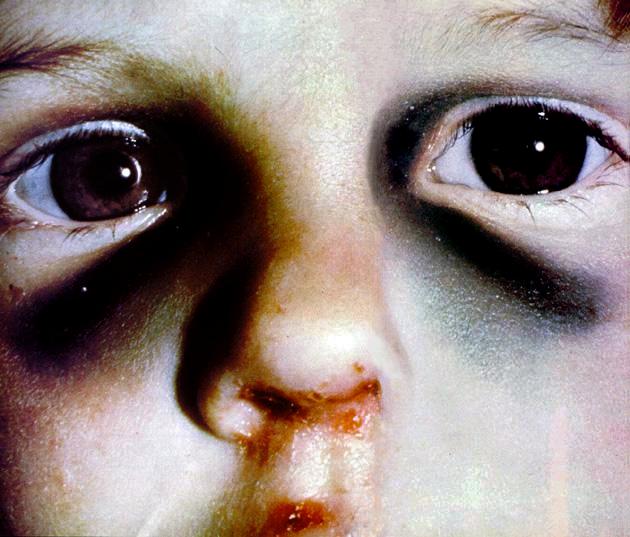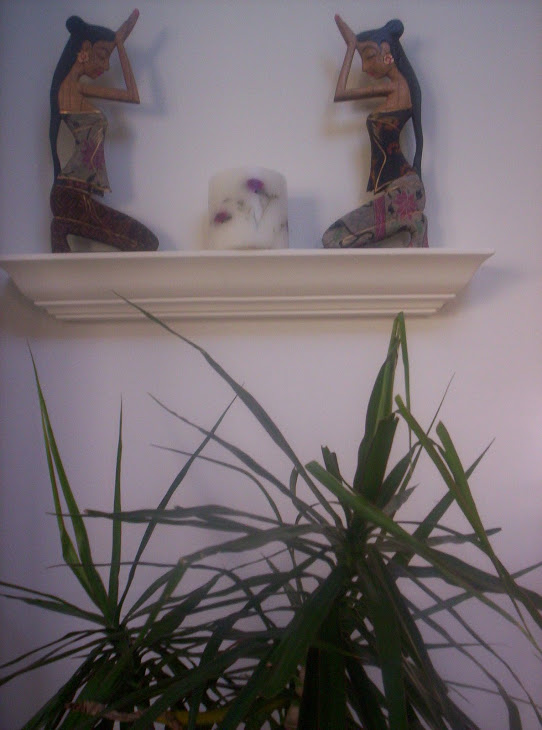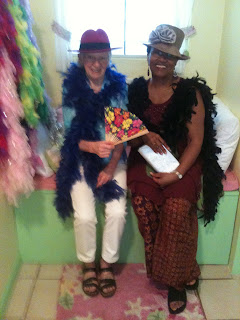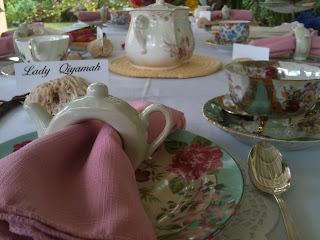
I was recently in New Orleans for the 2012 Annual Retreat of Unitarian Universalist Religious Professionals of Color and Latina/o's. The Retreat, titled, Finding Our Way Home. It was held March 14-17 and sponsored by the Unitarian Universalist Association - Multicultural Growth and Witness. If I am correct this was the occasion for our sixth (or was it the seventh) Retreat. Rev. Dr. Michelle Bentley, a former and now retired Unitarian Universalist Association staffer must be credited for the work she did to organize and initiate these Retreats. Since her departure from the UUA the Retreat has been continued under the leadership of first, Rev. Sophia Betancourte and now, Hope Johnson, Director of Multicultural Growth and Witness. When the Retreats first began they were solely designated for ministers of color. Since that time seminarians have been included as well as Directors of Religious Education. Most recently, UUs of Color that serve as Directors of Music were included this year. It has been hinted that the next additions might be Administrators of Color. I believe it would be extremely important at some point in the very near future to add Presidents of Color of UU Boards.
Just as the Retreat's target population has expanded so has the focus. Due to the small numbers in our predominantly white denomination of Unitarian Universalism many UUs of Color experience great isolation. Thus, many of us originally sought out each other at General Assembly, the largest gathering of Unitarian Universalists, held annually in various locations. This eventually included specific programming by UUs of Color as part of our commitment to ourselves as well as to provide education in our larger movement. Creating space where People of Color could spend time affirming their gifts and contributions and rejuvenating from the conscious and unconscious racism while taking a break from the task of "interrupting whiteness" revealed a great hunger and need for the Retreat.
While General Assembly is an expensive endeavor many UUs of Color were privileged to be able to attend and could count on the presence of other UUs of color which helped break the isolation. This meant a great deal to the less than fifty ministers of color and fifty seminarians that exist in the UUA. The annual Retreat has capped off at about sixty due to budget constraints. Thanks to UUA's commitment to UUs of Color, the expenses for the Retreat are solely underwritten by UUA.
In a faith movement comprised of approximately 130,000 individuals (more or less), including 1,700 ministers, ministers of color comprise approximately fifty of those 1,700 ministers. The racial break down in UUism is reflected in the demographics below provided by Dr. Paul Razor in a recent General Assembly:
—89% (whites); —1.0% (blacks); —3.0% (Hispanic); —3.0% (Asian); 4.0% (Multi-racial)
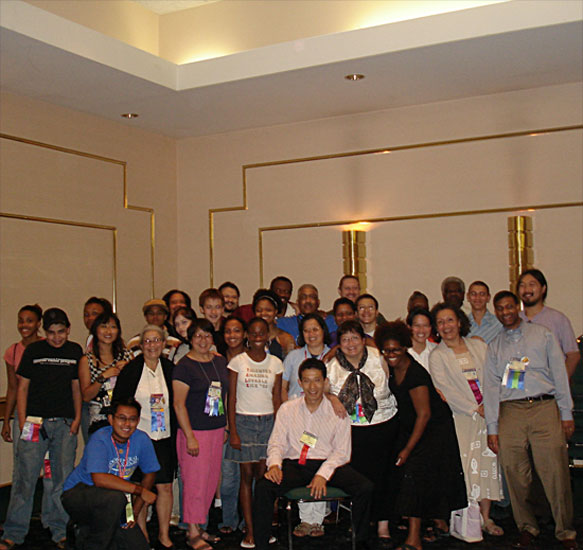
People of Color gathered at a Recent General Assembly
While previous year's Retreats emphasized community and was complemented by worship, caucus groups, and Rest and Recuperation (R&R), and education, this year's Retreat included some new components. The added service component recharged many of the participants without defeating the goal of the Retreat. The educational component was well done and complemented the Retreat format as well. Worship done by ministers is always soul renewing and that has always been the case with the worship at Retreat.
L-R Lesley Murdock, Janice Marie Johnson, Taquiena Boston, and Alicia Forde holding flowers presented to them by Finding Our Home Retreat participants for a job well done!
L-R Rev. Hope Johnson and Rev. Monica Cummings on ferry headed to "The Village" for service component.
Listening to history about the Village and receiving instructions to begin work.
The group is either preparing to board the ferry going to Algiers to the Village or preparing to disembark!
The Village was an outdoor African American Museum in Algiers that held artistic renderings that depicted the history of Africans, Arcadians etc. that lived there. They are resisting efforts to remove them because they are considered an "eyesore" by wealthy condo owners and developers coming into the area!
Retreat participants listening to the Director of the Village, Cathy sharing the history.
One of the many amazing pieces of art. This was painted on the side of a rough wooden building at the Village.
I particularly loved this depiction of Black women with their hands on their hips looking strong and ready for anything! They are my role model!
More great art!
L-R Revs. Adam Robersmith, Joe Cherry and Derrick Jackson take a break from their work for a chat and laughter!
Jorge Espinel, seminarian from Chicago talking with unidentified individual
Yours truly sitting on top of debris that I helped carry off as one of my work tasks!
Introduction
In this work of creating multiracial and multicultural communities it is important that we always be engaged in critical interrogation because our analysis is the engine that drives our initiatives and programs.
Categories tied too closely to the history of the racism experienced by particular ethnic groups may prove to be too limiting. Latinos and Latinas
do not fit easily into the same analysis that Blacks do, or Asians for that matter. As is the case with Native
Americans. Perhaps when we examine the growing number of children
in our RE programs that are multi-racial this is particularly evident. Telling these stories means telling diverse stories so that it is not assumed that it is one story but multiple ways in which people of color have been marginalized. And while telling those stories that we also speak to instances of solidarity that brought us together across differences of race, class, gender, sexual orientation etc.
Below are three radicalizing moments that I personally recall.
This Journey toward
wholeness, that is our efforts towards multi-racial multi-cultural and anti-oppression, has not been without pain or discomfort. The Journey has been fraught
with controversy. We have not always agreed on or known
the way forward. We have stumbled and fumbled, fussed and discussed, fought and
fumed and yet we find ourselves together despite our differences.
Rev. Melvin Hoover,
former Director of the Faith in Action Department of the UUA reminded me
several years ago that we UUs were among the first national religious bodies to
make an institutional wide commitment to anti-racism work. Since our vote at GA
in 1996 we have had hundreds if not thousands of leaders nationwide to participate
in the JTW Program.
In addition, the UUA
has moved beyond its initial black and white model.
Yet, we have had our painful moments. Some of which I share here lest we forget and fall into our old patterns and behaviors:
"We were in our second day of a Jubilee World
train-the-trainer sponsored by the UUA’s Faith in Action Dept in 1997 in
Columbus, OH. Lola Peters, a black UUA staffer stood in the front of the room.
Lola is a plus size woman and when she desires she can appear quite intimidating.
She stood perfectly erect not saying a word. It was time to begin so why wasn’t
she starting I thought? I was beginning to get restless. I thought at first it
was a classroom management style to get us to come to order. But she had had
our undivided attention for several minutes. The room was perfectly quiet. I
thought maybe she was relishing her power to hold us in suspense. People were
asking her questions, but she just stood there and ignored them as if she were
deaf. I remembered thinking, “this isn’t cute anymore.” I am ready to leave if
she doesn’t give us a clue or say what this is all about.” Finally,. She spoke,
“Who is not here? She asked. Our heads swiveled around, perusing the room like
surveillance cameras. Finally, someone said, “the people of color.” Well, I was
a people of color and I was in the room. But I immediately realized in looking
around that only blacks were present and all the Asian Pacific Islanders,
Native Americans, Latinas and Latinas were missing. Yesterday when we began and
made introductions there were other people of color from around the country.
When we had gotten far enough along in the training they had ascertained that
their stories and voices were not captured in the model being used. They had
objected to the binary model and challenged the trainers.
In that moment the emotional intensity in the room
was sharp enough to slice with a dull knife. Yesterday they had challenged us.
Explanations were made that probably sounded like excuses. Some individuals
began to cry. I felt a deep down despair. Some of our hearts were breaking. We
had done to one another what we were trying to undo with our training. We had
rendered some of our own invisible by eliminating them from the curriculum,
from the history and the analysis.
Suddenly the door opened. They silently marched in, single file and stood up against the wall. They stopped and stood silently.
We knew we had messed up big time and it
was excruciatingly painful. They each read a statement. One after another they talked
about how it felt to be rendered invisible in their faith tradition that they
had given so much to. People in the audience were visibly weeping. I don’t
remember their words so much but the incident is permanently imprinted on my
brain. Their act of removing themselves from our midst was so painful. If was
as if a piece of us had been spirited away and somehow some of us had not
noticed.
I was so moved that when I returned to my place of employment, the
Georgia Human Relations Commission in Atlanta, I attempted to convey why we ought to be using a
multicultural and multiracial model. W were doing a new diversity training at the Commission
using a binary model of black and white. We had already conducted it once and received a great deal
of flack from the Hispanic participants. I was not able to convince my employer
to change our model.
Some lessons you see
are only learned in the pain of conflict and adversity, and sometimes not even then.
We Fall Down But We Get
Up
The 1993 General Assembly was held in
Charlotte, NC. It was my first GA. It was also the 250th anniversary of Thomas Jefferson. Jefferson is a iconic personality among UUs in the South.
As fate would have it, the GA Planning Committee thought they would lift up
this historic event for the much loved statesperson and host a “costume ball” to
which they invited participants to come dressed in “period costume.”
The UU Women’s
Federation heard about the Thomas Jefferson Ball. As a member of the Steering Committee I participated in drafting a letter to the GA Planning Committee explaining why this was not a
good idea and the fact that it was insensitive to Blacks. In my mind when I heard about the Ball I immediately
conjured up a picture of blacks in tattered burlap garments in shackles and
chains. And while that image might not accurately describe all blacks , the majority of blacks were slaves.
While I was a little
surprised by the Planning Committee’s insensitivity I assumed they would fix
things. The Committee responded and thanked us for our letter but did not agree
with us and indicated that it was too late to cancel the event anyway.
GA finally arrived. As
a new UU I had been reading everything I could get my hands on. And while there
was not much by UU's of color I read Mark Morrison Reed’s, Black Pioneers in a White
Denomination and the collection of writings by authors of color, Been in the
Storm So Long, edited by Mark Morrison Reed and Jacqui James. You can imagine
my excitement when I discovered that General Assembly was featuring a skit depicting
famous UUs. I was so proud that I knew about individuals like Frances Ellen
Watkins Harper, Annie B. Jordan and others. So there I sat and waited as
historic personalities paraded before me and I tried to guess who they were.
And I eagerly waited to see some of the UUs of color that I had read about. I waited and I waited and
it was finally over with no mention of any UUs of color. I thought, “Oh my
goodness, what have I gotten myself into.” Meanwhile, other issues were brewing.
“A group of people decided to get together to protest the TJ Ball. I attended and years later I remember the drums
especially. As a Black American and a new UU it was a moving experience to
participate in the demonstration against the Thomas Jefferson Ball. We had a large contingent of
people of color and European American allies. The energy was high and
celebratory. We were experiencing a “Ball” of sorts downstairs while the TJ
Ball took place upstairs. We sang and I was thrilled to be a part of something so significant so
early in my UU formation. I was especially struck by the absence of rancor.
Some individuals actually participated in both
the demonstration and then went upstairs to dance and frolic with
friends. Some came back and forth as the spirit moved them. I learned something
important that night and that is, sometimes we can sit with the discomfort and
pain of our differences. I learned that all differences do not have to be
disagreeable. I did not hold it against those who identified with Thomas
Jefferson nor did I hate on them for wanting to get dressed up for a night of dancing or for
supporting TJ. At another point in my ife I would have expected individuals to
choose – to take a stand.
I also met the
personable Ms.Gladys McNatt and Norma Poinsett, two Black elder UUs for the
first time. Some one (who, I don't remember) spoke in favor of the TJ Ball. Gladys raised the issue of
the TJ Ball with the Planning Committee who I am told ignored her concerns. The
knowledge that once again people of color were expected to be the appointed
spokes person and to monitor “race issues” tends to make them very vulnerable.
This is especially true when they are one of a few or the only one. I noticed
how some whites referenced the blacks that endorsed the Ball. It reflects the
attitude that, “we had one of you present and accounted for and she didn’t
challenge us. about this.” People of color are required by virtue of racism to be the
upholders of our the race and to be the paragon of what is politically correct. It
was not up to Gladys or any single Black to catch this enormous faux pas. I would not have wanted to
be in her shoes.
But in 200 I stepped
into her shoes when I was hired as the only person of color on the field staff
in the 23 districts in the UUA. Jim Brown, District Executive (DE) for the South West District had
previously had this dubious distinction before he retired. One has to appreciate
my situation. Coming in on the heels of a European American male patriarch, Roger Comstock. He was a
legend in his own right. I had confidence in my skills although I knew the
learning curve would be pretty steep. Revs. Bill Sinkford and Tracey
Robinson-Harris conducted the District Start Up Weekend in August, 1999 at the Mountain
in Highlands, NC. Bill and Tracey skillfully maneuvered the dialogue so that
participants began to talk about their anxiety about Roger’s departure. Once
they acknowledged theirs I could then acknowledge my biggest anxiety - which was that TJD members would see me as
an affirmative action hire and therefore not qualified. Even after a year on
the job, one of my evaluation comments noted that I had done well despite
having no experience as a UU nor with working with UU congregations. I realize
that my then eight years as a UU paled in the face of persons that were three generation UUs. However, the person’s assumption that I had no experience was telling. On the other hand, I was fearful
that UUs would not be willing to hold me to the same standard of excellence
they held other DEs and that they would be afraid to engage me and challenge me
if my stuff wasn’t right. The perfect catch 22!
I tell these stories so that they will not be lost and so that we know where we have come from and where we are going!
Q. Where have you seen the Holy in your life and failed to step up to claim your Truth?
Q. What would it take to do so?
Blessed Be! Rev. Qiyamah
